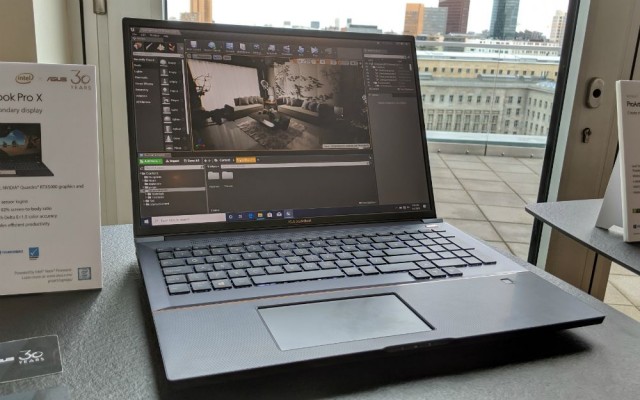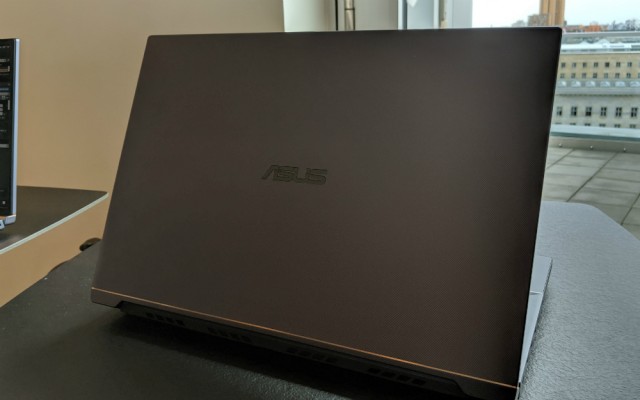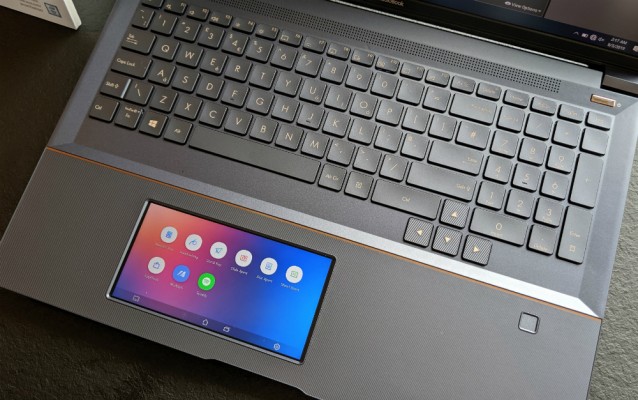Asus' ProArt StudioBook Pro X Packs Quadro RTX 5000 and Second Display
BERLIN, GERMANY -- Asus is doubling down on its efforts to introduce content creation laptops with the new ProArt lineup. Most impressive among them is the ProArt StudioBook Pro X.
The starting price for the StudioBook Pro X hasn't been revealed, but the laptop will be available toward the end of the year.
Asus ProArt StudioBooks specs
You can configure the StudioBook Pro X with up to an Intel Xeon E-2276M processor, an Nvidia Quadro RTX 5000 graphics card, 128GB of RAM and a to-be-determined amount of storage with the ability to be placed in RAID 0. This is also the only laptop in the ProArt that has a ScreenPad.
The rest of the ProArt StudioBooks will be on the lower end. There’s the StudioBook Pro 17, which comes with a Xeon E-2276M CPU, a Quadro RTX 3000 and a NumberPad, and the Pro 15, which boasts a Xeon CPU, a Quadro RTX 5000 Max-Q and a TouchPad.
Meanwhile, the regular StudioBook 17 can get packed with a Xeon E-2276M, a GeForce RTX 2060 and a NumberPad, and the StudioBook 15 gets a Xeon CPU, a GeForce RTX 2060 and a TouchPad.
Design
Sign up to receive The Snapshot, a free special dispatch from Laptop Mag, in your inbox.
The StudioBook Pro X has a premium military-spec chassis painted slate blue with gold trimming. And instead sporting a flat hood, it has a wave of ridges that are nice to the touch.
The interior features the ScreenPad 2.0, which is an improvement upon the original ScreenPad in the ZenBook Pro 15. It acts as a semi-secondary display built into the touchpad that lets you easily control apps like Spotify or Calculator.
There's also a fingerprint reader for Windows Hello, and the bezels on its display are so thin that it allowed Asus to jump the display ratio from 16:9 to 16:10. Not to mention that the StudioBook Pro X boasts a relatively small footprint, fitting a 17-inch display into a 15.6-inch chassis.
Display
The StudioBook Pro X’s panel is PANTONE validated, covering 97% DCI-P3 and its Delta-E is less than 1.5. What does that really mean? Well, in person the display was colorful.
However, the panel came in 1920 x 1080 and there isn’t a 4K option as of right now, which is a bummer, especially for content creators. And when I saw it in person, the display didn’t seem all too bright. Hopefully, the numbers will prove me wrong when we get this bad boy into the lab.
Keyboard and ScreenPad 2.0
Not only did the keys have deep travel, but the rigid palm rest made the StudioBook Pro X super comfortable to type on.
I messed with the ScreenPad a bit as well, and while I’m not exactly the biggest fan of it, it seemed to work well enough when I was rummaging through Spotify and the MyASUS app.
Features
Another important key feature that Asus highlighted was that the sound of the fans wouldn’t exceed 39dB, and that it wouldn’t cause the system to throttle either, which is neat. I love me a silent assassin.
If you’re in desperate need for those high-speed connections -- don’t worry, this baby comes packed with Wi-Fi 6, so even if you don’t have a compatible router, yet, you’re future-proofing.
Outlook
We’re excited to get the StudioBook Pro X, as well as the rest of the ProArt series, through our lab to see how useful they really are to content creators. Stay tuned here for more IFA 2019 coverage and for our full reviews and benchmarks.

Rami Tabari is the Reviews Editor for Laptop Mag. He reviews every shape and form of a laptop as well as all sorts of cool tech. You can find him sitting at his desk surrounded by a hoarder's dream of laptops, and when he navigates his way out to civilization, you can catch him watching really bad anime or playing some kind of painfully difficult game. He’s the best at every game and he just doesn’t lose. That’s why you’ll occasionally catch his byline attached to the latest Souls-like challenge.



